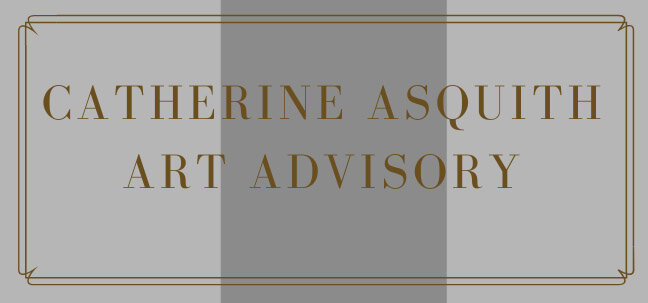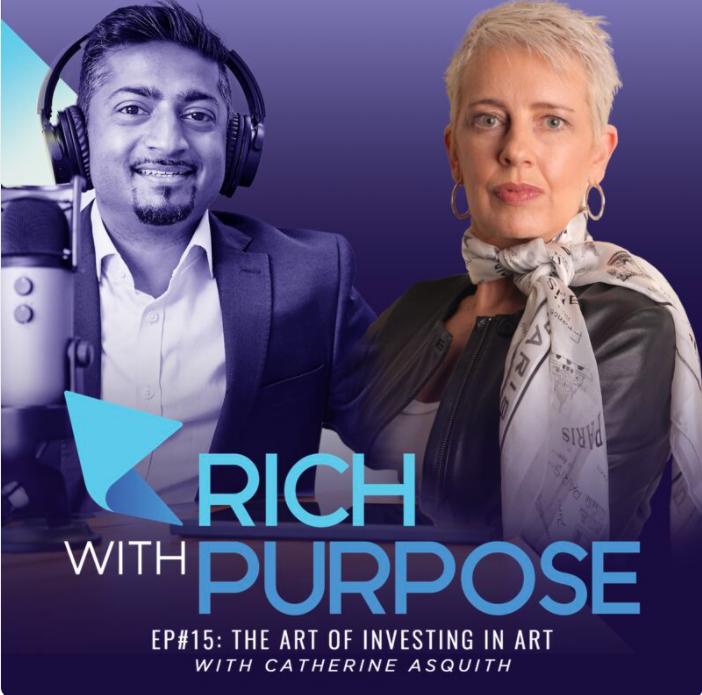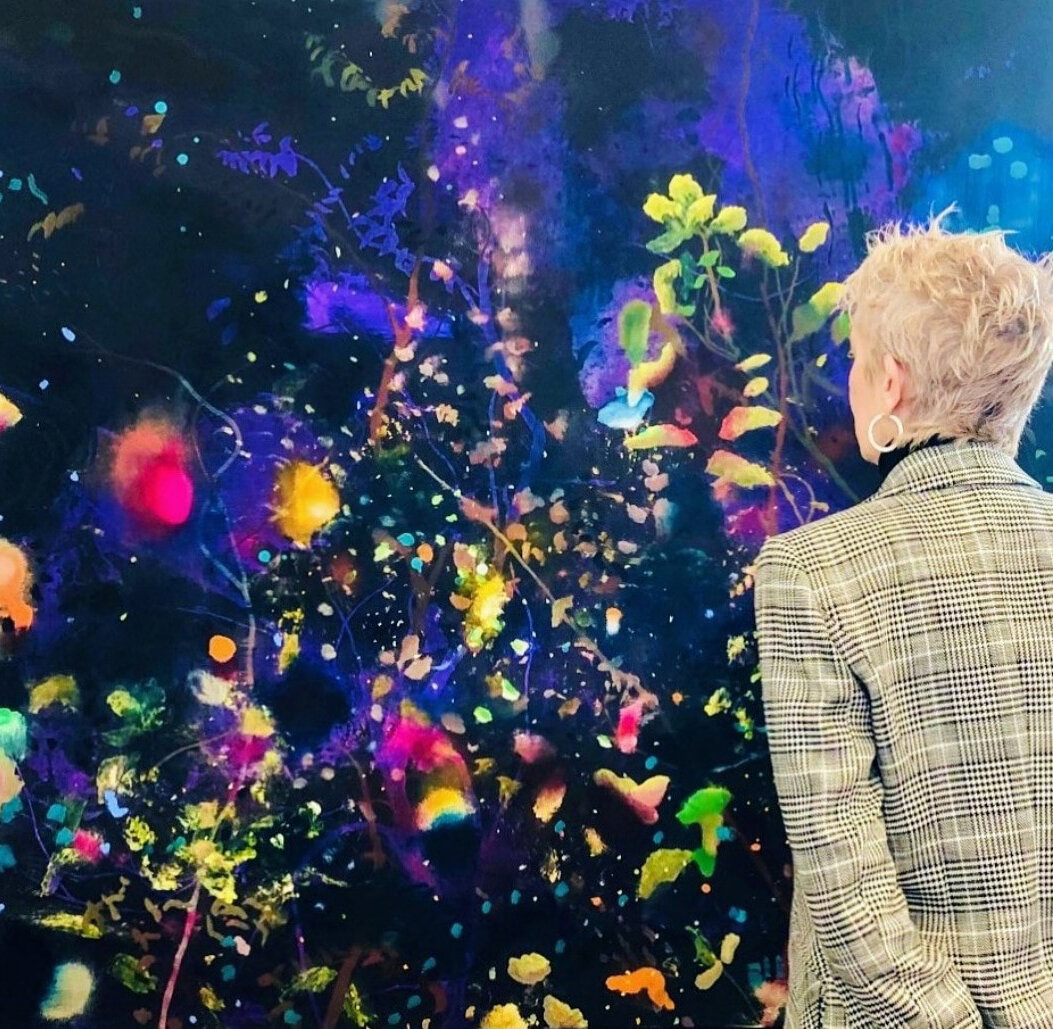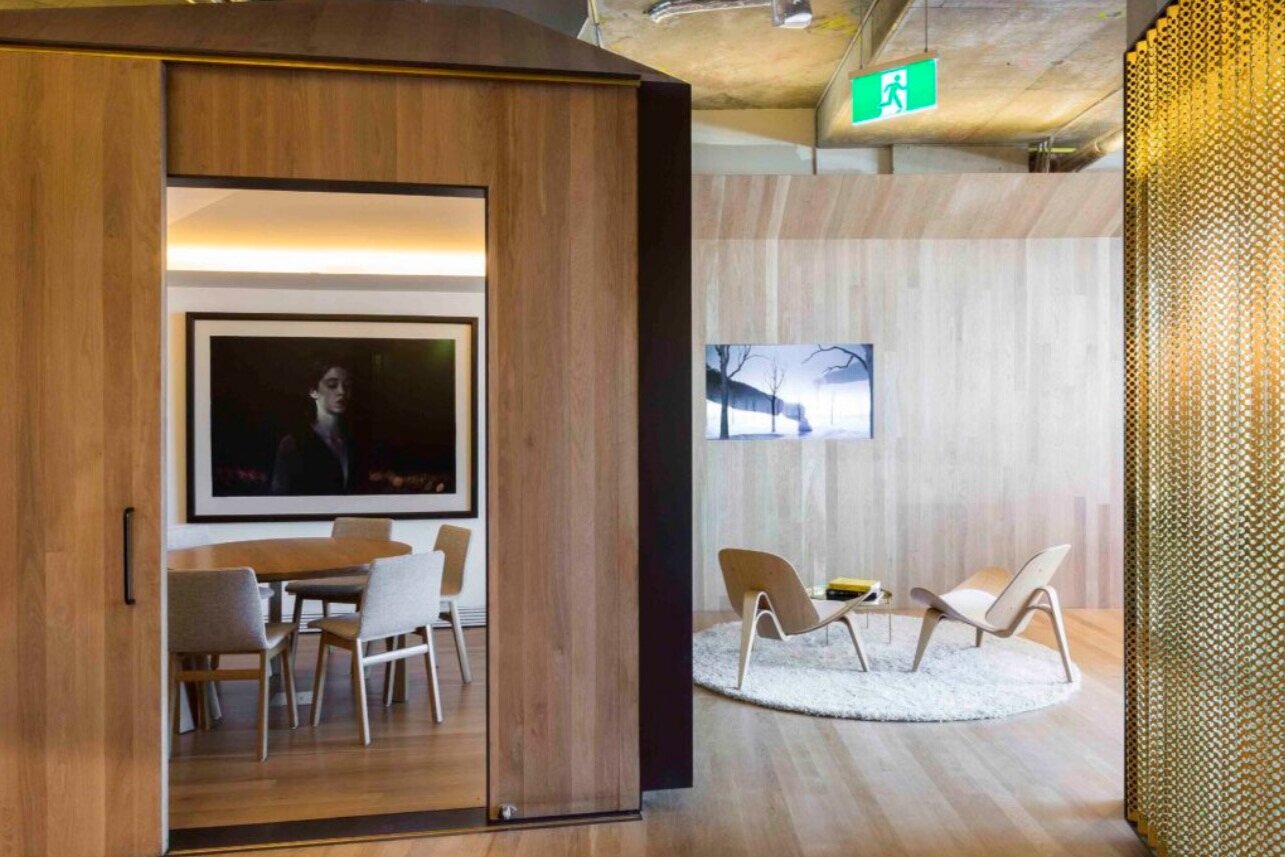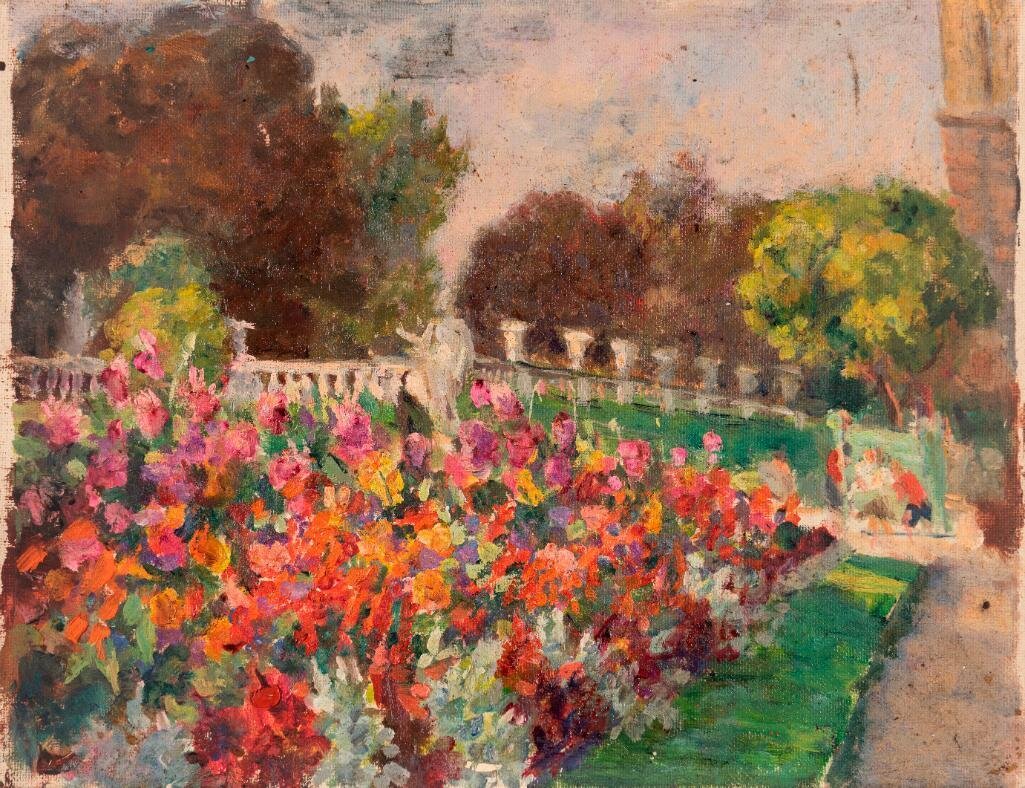Panel Discussion with Catherine Asquith, Andy Dinan, Director of MARS Gallery, and Collector Simon Terry @MARSGallery, 18th October, at 6pm
Tricky Walsh From Naples To MARS, a major installation by Tricky Walsh, which has just returned from an exhibition at Museo Madre in Naples, Italy! The mural is comprised of over 10 hand painted panels, and is embedded with augmented reality. When viewed through a smartphone app, animations come to life accompanied by recordings of the artist’s voice.
Courtesy the artist & MARS Gallery
The following is an approximate transcript of Catherine Asquith’s talk. You can listen to this and all the talks live here
I have been tasked with providing a brief overview of (i) the role of an art advisor; and (ii) why use an art advisor.
So probably a good starting point would be to define, the descriptive, “art advisor”.
I see the term as one which provides a commercial perspective to curatorial advice and strategies when advising on, building, and managing a collection.
1. The Role of an Art Advisor: fundamentals
Fundamentally, I view the role of an art advisor as one of education – and whether this means advising clients new to collecting art – or - providing in-depth market insight and analysis to a well-established collector – an art advisor draws on their up to date and working knowledge of the art market.
As part of this education, I also like to introduce new clients to the art world in a way which demonstrates the interconnectivity between all the players - so we attend art fairs, commercial galleries, museum and public gallery collections, and auction house previews and sales, all as a means of contextualising these entities.
I would also contend, that an art advisor wants their client to gain an understanding of how the market operates, from say, - the rationale behind pricing of artworks in the primary market, to the logic behind setting estimates on works at auction, to why the same artist in different collections can have a different value - because with knowledge comes empowerment. The more empowered a collector, the more confident they will become in making decisions about their acquisitions and more generally, their collection. – I am actually happy to share my knowledge, and I find it very satisfying when a client starts to utilise the vernacular of the market – I know I am doing my job well then.
And of course, It goes without saying therefore that an art advisor needs to stay abreast of new ‘trends’ and ongoing developments in the art world – so for example, I’m alert to new artists that are gaining traction in the market, - what the market is doing –is there a downturn, or an uptick in certain categories – what has transpired at recent art fairs – any significant auction results – what are some recent museum acquisitions – anything about the market which is going to some impact on one of my collectors. Having this level of knowledge to hand is imperative in order to provide timely advice to collectors.
2. Why use an art advisor?
Well, in a word: stewardship – it is the very nature of collections which demand at some point, professional oversight.
There are many and varied components inherent to an art collection which need to be managed or facilitated by someone other than the owner of the collection: everything from regular valuations and condition assessments, to conservation and reparations, possible relocations - how do you relocate the 3 tonne bronze sculpture in your front garden - , storage to perhaps art financing, museum and gallery loans, and de-accession or gifting a collection.
As successful as many collectors are, in their own right, not all have the knowledge or energy to expend on this growing entity.
Perhaps two of the most valuable attributes an art advisor can offer are: time and access -
So for example for before proposing an artwork for a collection – I have viewed the artwork within say, the context of an exhibition, or at an auction preview; taken images of the proposed artwork - discussed the artist, the work and career path, with the gallerist or - the market position of the artist with the auction specialist, undertaken the necessary research and due diligence, and confirmed the market value, all of which may have taken several weeks to complete, but can be presented to the client in one sitting.
A good art advisor will also know where to source the best available artwork by a particular artist and should be able to gain access to hard to obtain or in demand artists – particularly where there may be a waiting list or the gallery preferences museum or institutional collections. This is particularly prevalent internationally - – although, that said, there are certainly some Australian galleries that are now adopting the same practice. To gain access and ultimately, the trust of the gallerist, I need to represent the collection, without comprising confidentially, in a manner which is attractive to the gallerist, and is seen as potentially adding value to the artist.
So it becomes a bit of dance – certainly this is sometimes frustrating and time consuming – nevertheless this gatekeeping has become part of procurement these days.
So when do I enter the picture ?
In my experience, most of the time, collections invariably commence in a fairly organic manner. But at some point, there will be the realisation that it has become an asset, and a professional is needed to help formalise the collection.
To start, I want to learn about the aims and objectives for the collection, whether the goal is purely investment, or aesthetic and cultural value, or to build a legacy, I also want to have an understanding of any particular lifestyle factors such as where the collection will be housed, for example on display in your home or office, or at a specialist art storage facility.
Additionally, I like to discuss and consider with the collector the desired extent of the collection, i.e. a maximum of 100 objects and procured over a 5 year period, or capped at 500 works collected over a 20 year period, or indeed, is it a lifetime enterprise.
We then consider the potential thematic parameters of the collection as well as the preferred genre, for example, paintings by emerging artists; sculpture from the modernist period; or a focus on Australian Indigenous art.
There is no absolute when it comes to necessarily including a thematic parameter, but certainly I think there is something to be said for implementing some type of parameters – they will, by default, impose acquisitional discipline and direction.
And on that note re discipline – I read the other day, that apparently the best art advisors say “no” more often than “yes” – I think this has particular relevance at what I term high-octane events such as art fairs and auctions – at times I have to reign in the frenetic energy and enthusiasm - which I love to witness, but I don’t want to hear buyer’s regret the next day. So, in way, I become something of a gatekeeper.
Once we have settled upon the basic infrastructure, we can then consider procurement – this will include devising a selection criteria and acquisitional methodology – for example, will we be commissioning some works, sourcing from the primary or secondary market, or both - and at this point I would also want to advise the collector on some simple ongoing management protocols, such as scheduling annual valuations & condition assessments for example, and inventory management.
With the foundation of the collection in place, we can then start to consider development and enhancement strategies and directions.
So, for example,
we might perhaps consider devising a loans strategy – this will be contingent with the nature of the collection –- many attributes of the collection stand to gain, not just the loaned work; and
potential catalogue publication – this can be of value especially with regard to eliciting interest from museums and public galleries – in terms of potential loans or future donations.
And finally, there will come a time when we need to discuss the future of the collection when we need to consider de-accession strategies in line with some estate planning:
does it simply go to the children?
a museum?
or sold in its entirety via auction?
This is quite an important discussion to have at some point, preferably with both your art advisor, and accountant or wealth manager.
And this latter point brings me to probably THE MOST important aspect of a collection and that is PROVENANCE.
The importance of PROVENANCE: cannot be underestimated – it determines the overall value of the collection – both from a curatorial and market perspective – and it impacts on how saleable and/or how attractive the collection will be at the appropriate juncture. – for either donation or sale
Reviewing and establishing a clear line of provenance is a key component in the due diligence process - this is particularly relevant to sourcing works from the secondary market, but can also be applicable to and has a place in the primary market.
Provenance = the pedigree /history of the artwork from artist’s studio to current owner. When assessing an artwork for a collection -
of particular interest is what collection or collections the subject work has come from, and the significance of the collections; and how long the subject work was held in that collection;
I am also interested in which gallery initially exhibited and/or sold the work – or did it come to the current owner direct from the artist’s studio
Is it fresh to market? Or has the work has been at auction too often, even if it has sold? Sometimes, an over-traded work can become burnt - even if there are reasonable circumstances, e.g. Death, Debt & Divorce.
Is the work in the catalogue raisonné? (a published inventory of all the artworks an artist has produced throughout their career; it is generally a rather lengthy & scholarly undertaking)
And an excellent example of why a catalogue raisonné matters and the importance of provenance or lack thereof, was highlighted in the recently aired “Whiteley Scandal” on ABC TV, and was explored in greater depth by Gabriella Coslovich’s compelling “Whiteley on Trial”.
It perhaps would be interesting to consider this ‘scandal’ arising after 2020, when the monumental 7 volume catalogue raisonné on Brett Whiteley by ex-Christies, art historian, Kathie Sutherland was published.
Some other examples of provenance and and how they impacted values –
The Macklowe Collection, described by Sotheby’s as “…an exemplary vision of connoisseurship: a peerless collection of rare and iconic masterworks from the 20th and 21st centuries” was sold in New Yorkin May last year for an astounding US$922m;
And Andy Warhol’s iconic and most expensive work by the artist to come to auction, “Shot Sage Blue Marilyn” which sold at Christie’s NY in May 2022 for US$195m.
In summing up –
Part of my remit as an art advisor, is that I need to have, maintain, nurture and indeed, develop, long standing professional relationships with all players within the art ecosystem – as an art advisor I am constantly moving between the markets and sectors, it’s sometimes about balancing competing agendas, perspectives, and certainly personalities - , all through which I need to maintain a constant focus on the needs of my collectors and their collections.
It is sometimes, an unusual relationship – that of art advisor and collector – in a way we are both investing in something long term – and in order to achieve the objectives, there has to be mutual respect and trust.
And what continues to drive me and what I am constantly aspiring to for my collectors and their collections - – private, corporate or institutional – is to work in a curatorially sound manner, in order to achieve a collection of artistic integrity, enduring quality, market longevity.
©Catherine Asquith 2023
